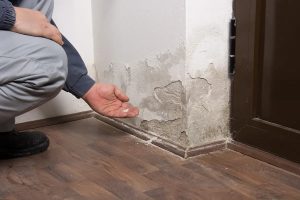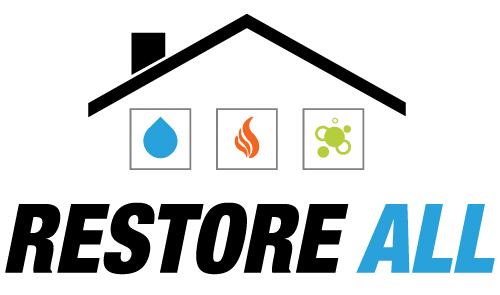 Water damage is a common and unfortunate event that can wreak havoc on your home. Whether it’s caused by a burst pipe, a leaking appliance, or a natural disaster like a flood, water damage can have serious consequences. It can lead to structural damage, mold growth, and the loss of valuable possessions. Knowing what steps to take immediately after discovering water damage is crucial in mitigating the damage and ensuring a swift and effective restoration process. Always use a professional restoration company to prevent mold and sickness.
Water damage is a common and unfortunate event that can wreak havoc on your home. Whether it’s caused by a burst pipe, a leaking appliance, or a natural disaster like a flood, water damage can have serious consequences. It can lead to structural damage, mold growth, and the loss of valuable possessions. Knowing what steps to take immediately after discovering water damage is crucial in mitigating the damage and ensuring a swift and effective restoration process. Always use a professional restoration company to prevent mold and sickness.
Understanding Water Damage
What is Water Damage?
Water damage refers to the destruction or deterioration of a property caused by the intrusion of water. It can occur in various forms, such as leaks, floods, or excessive moisture. This damage can affect the structure and contents of a home, leading to potential health hazards and financial losses.
-
- Water damage can result from broken or leaking pipes, appliance malfunctions, roof leaks, or natural disasters like floods.
- The severity of water damage depends on factors such as the volume of water, the duration of exposure, and the type of water involved (clean water, gray water, or black water).
- Acting quickly is crucial, as water damage can lead to mold growth, structural problems, and health risks if left untreated.
Immediate Steps to Take After Discovering Water Damage
Discovering water damage in your home can be overwhelming, but taking immediate action is essential to minimize further damage and begin the restoration process. Here are the key steps to follow:
Step 1: Ensure Safety and Stop the Source
The first priority is to ensure the safety of yourself and your family. Turn off the power to prevent electrical hazards, but exercise caution if entering wet areas. Identify the source of the water damage and take necessary steps to stop it. This may involve shutting off the water supply or calling a professional plumber.
Step 2: Document the Damage
Documenting the extent of the water damage is crucial for insurance claims and the restoration process. Take photographs or videos of the affected areas, capturing the visible damage and any valuable items that may have been impacted. This documentation will serve as evidence for insurance purposes and help restoration professionals assess the damage accurately.
Step 3: Contact Your Insurance Company
Notify your homeowners’ insurance company as soon as possible to report the water damage. Provide them with detailed information about the incident and the documentation you have gathered. They will guide you through the claims process and arrange for an adjuster to assess the damage.
Step 4: Mitigate Further Damage
Take immediate measures to prevent further damage to your property. Remove any standing water using buckets, mops, or wet-dry vacuums. Open windows and use fans or dehumidifiers to promote air circulation and dry out the affected areas. If possible, move furniture and valuable items to a dry area to prevent additional damage.
Step 5: Assess the Extent of Damage
Evaluate the extent of the water damage to determine the necessary repairs and restoration efforts. Inspect the walls, floors, ceilings, and any affected structural components for signs of water saturation, discoloration, or deterioration. Pay close attention to hidden areas, such as behind walls or under flooring, as they are prone to mold growth.
Step 6: Consult a Professional Restoration Company
To ensure thorough and effective restoration, consider hiring a professional water damage restoration company. They have the expertise, equipment, and experience to assess the damage accurately, implement efficient drying techniques, and mitigate the risk of mold growth. A reputable company will also work closely with your insurance provider to streamline the claims process.
Step 7: Document the Restoration Process
Throughout the restoration process, continue documenting the steps taken, including the cleanup, repairs, and any expenses incurred. Keep all receipts, invoices, and communication with the restoration company and insurance provider. This documentation will aid in insurance claims and serve as a record of the restoration efforts.
Water Damage Restoration Process
Once the initial steps are complete, the focus shifts to the water damage restoration process. This involves thorough cleaning, drying, and repairing of the affected areas. Here’s an overview of the key stages involved:
Stage 1: Water Extraction and Removal
The first step in the restoration process is removing any standing water from the affected areas. Professionals use specialized equipment such as pumps, wet-dry vacuums, and moisture meters to extract the water efficiently. This stage is crucial in preventing further damage and reducing the risk of mold growth.
Stage 2: Drying and Dehumidification
After water extraction, the drying process begins. Industrial-grade dehumidifiers, air movers, and fans are used to circulate air and remove excess moisture from the affected areas. Professionals monitor the moisture levels and adjust the equipment accordingly to ensure thorough drying.
Stage 3: Cleaning and Sanitization
Once the affected areas are dry, they need to be thoroughly cleaned and sanitized. This includes removing debris, disinfecting surfaces, and treating any mold or mildew growth. Specialized cleaning solutions and techniques are used to restore the cleanliness and safety of the space.
Stage 4: Repairs and Restoration
After the cleaning and sanitization, the restoration team assesses the structural damage and initiates repairs. This may involve replacing damaged drywall, flooring, insulation, or other building materials. The goal is to restore the affected areas to their pre-damage condition and ensure the structural integrity of the property.
Stage 5: Mold Remediation
If mold growth is detected during the restoration process, mold remediation becomes a critical step. Professionals will assess the extent of the mold infestation, contain the affected areas, and safely remove the mold. They will also address the underlying moisture issues to prevent future mold growth.
Stage 6: Restoration Completion
Once all repairs, cleaning, and mold remediation are complete, the restoration company conducts a final inspection to ensure the successful restoration of the property. This includes checking for any remaining signs of water damage, verifying the proper functioning of systems and components, and ensuring the overall safety and livability of the space.
Preventing Water Damage in the Future
While water damage can be devastating, there are measures you can take to prevent or minimize its occurrence in the future. Here are some essential tips for preventing water damage:
Tip 1: Regular Maintenance and Inspection
Schedule regular maintenance and inspections of your plumbing system, appliances, and roof. Address any leaks, cracks, or signs of deterioration promptly to prevent potential water damage.
Tip 2: Proper Drainage and Grading
Ensure that the grading around your property directs water away from the foundation. Clear gutters and downspouts regularly to prevent water from pooling or overflowing.
Tip 3: Install a Sump Pump
Consider installing a sump pump in your basement or crawl space to prevent water accumulation during heavy rainfall or flooding. Test the pump regularly to ensure it is functioning correctly.
Tip 4: Insulate Pipes
Insulate exposed pipes to protect them from freezing during colder months. Frozen pipes can burst and cause significant water damage. Proper insulation helps prevent this risk.
Tip 5: Be Mindful of Appliance Usage
Use appliances such as washing machines, dishwashers, and water heaters responsibly. Inspect hoses and connections regularly for signs of wear or leaks, and replace them as needed.
Tip 6: Install Water Detection Devices
Consider installing water detection devices that can alert you to leaks or excess moisture. These devices can provide early warnings, allowing you to take immediate action and minimize potential damage.
Tip 7: Know the Location of Shut-Off Valves
Familiarize yourself with the location of the main water shut-off valve and individual shut-off valves for appliances and fixtures. In emergencies, knowing how to shut off the water quickly can prevent extensive damage.
Water damage is a significant threat to the integrity of your home. By understanding the immediate steps to take after discovering water damage and following a comprehensive restoration process, you can minimize the impact and restore your property effectively. Additionally, implementing preventive measures can help mitigate the risk of future water damage. Remember, always prioritize safety and consult professionals for thorough assessments and restoration efforts. With the knowledge and insights provided in this guide, you are equipped to navigate the challenges of water damage and protect your home.
Contact Us (954-338-1111) for a Free Estimate!
—
 About Restore All
About Restore All
Restore All, LLC is a licensed, insured, full-service Professional restoration company providing Water, Fire and Mold remediation and restoration for residential and commercial property. Our certified Water & Fire damage technicians and licensed Mold assessors & remediators are committed to providing professional restoration and fast and affordable service 24 hours a day. Call us today at (954) 338-1111 to see how we can help.
> Learn More

 About Restore All
About Restore All